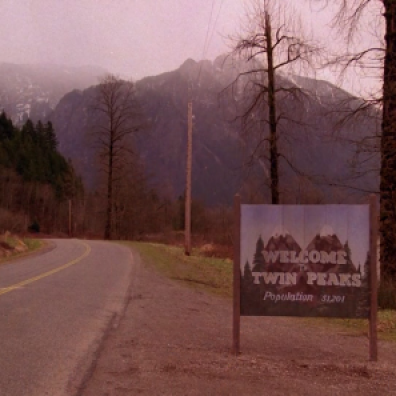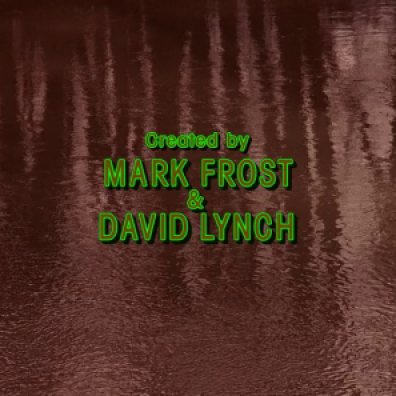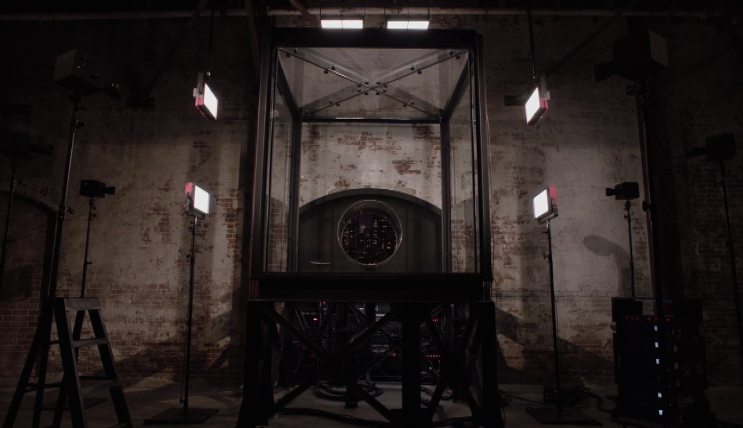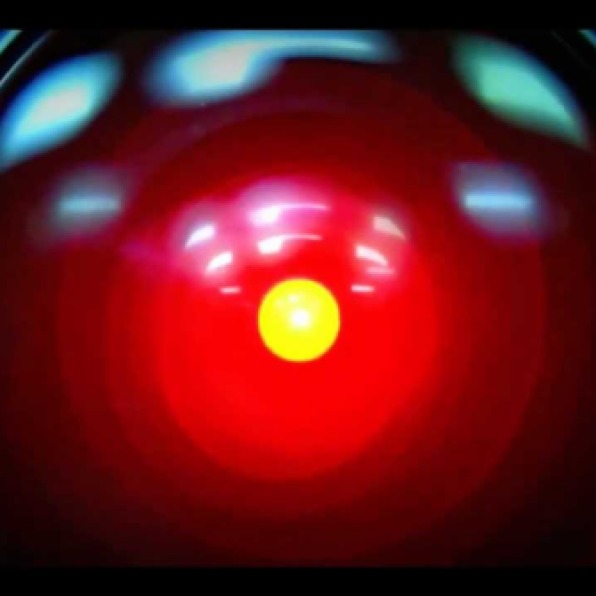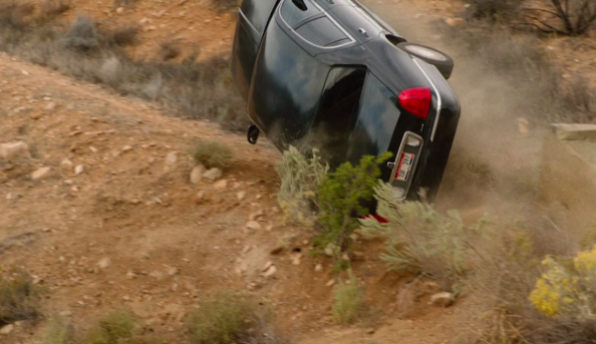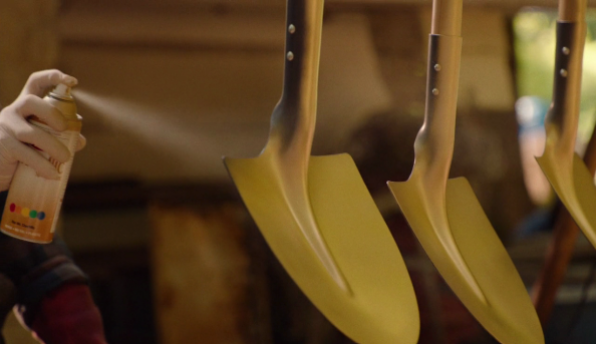This time we are not dreaming anymore, the 25 year night has finally come to an end and “the sleeper has awakened”: Twin Peaks is really back on our screens and we have already been treated to four new episodes.
The first two, although interesting for widening the scope of the original series to include new places and characters, remain pretty much in tune with what we already knew about Twin Peaks (actually, the Red Room sequences are not as surprising as they used to be a quarter of a century ago). This likely served to bring us back into the narrative while introducing new threads, and the excellent third episode gives us a hint of the new mythology that is going to be developed within the new season, centered on Dale Cooper’s return to the town of Twin Peaks (home). The fourth installment is a continuation of the new ideas and situations established in its predecessor. All in all, one could say that the new Twin Peaks is very different (darker in tone, perhaps, and doing away with many of the melodrama and soap opera aspects), but fundamentally the same (the underlying themes remain stable).

Here are some transversal thoughts about the first four episodes, possible avenues for further examination during the next few months.
• First, the opening credits: They constitute an excellent example of the fact that this new season, while superficially different, retains at its core the exact same mythological roots as the original. Though the images appear different, the structure of the credits indeed remain stable. The only slight difference is the opening image of a rainbow bubble floating in front of Laura Palmer’s face.

Although different from the bird that traditionally opened each episode of the 1990s series, one can argue that this rainbow is not much of a change. It should be considered alongside the following image of Sheryl Lee as the Good Witch in Wild at Heart, floating in a similar bubble (the rainbow aspect of the bubble is surely not an accident in this context).

In both cases, the bubble is associated with the air, with floating / flying, and as with the bird, one can guess that it is supposed to symbolize the “soul” of Laura Palmer “descending from pure air”, now that she has become a member of the Lodges.
After this initial image, the sequence follows a movement which, though slightly modified compared to the original opening credits, maintains the same relationship to the four elements. It begins with a bird’s eye view from the forest that has come to symbolize the town (air & earth); continuing with another eye bird’s view (!) from above the waterfall neat the Great Northern Hotel (water), creating a round shape in the middle of the screen. This shot transforms into a vision of the fiery red drapes of the Lodges, which feel like they have been set in motion by the impact of the water or by a breeze (air & water & fire); and the credits finally end with a tracking, swirling shot of the chevron motif on the floor of the Lodges, clearly associating it with the four elements mentioned above, and perhaps more precisely with water and to the mysterious quintessence of Alchemy (see my book for more details about the meaning of the floor).
Here are the sequences from the new Twin Peaks, the 1990’s version, and Ruth, Roses and Revolver (a sequence from the film Dreams That Money Can Buy–see my previous post for more on David Lynch’s admiration of this film) placed side by side, following the order of the new series to visualize the air / earth / water / fire components:
• What should one make of the observation room set in New York and its glass box, continually watched by various video cameras and a young man seated on a sofa? What is this box? And why is it so important to warrant constant surveillance?

Once more, the answer to those questions may be related to The Great Art of Alchemy. When seen from the perspective of the young man, the box unites the various geometrical figures (circle, square, triangle) involved in “the squaring of the circle”, which was a process designed to created the philosopher’s stone.
The philosopher’s stone is described in such a way by one alchemist: [1.] Make of a man and woman a circle [2.] then a quadrangle [3.] out of this a triangle [4.] make again a circle, and you will have the Stone of the Wise. This was meant to symbolize the process followed by the Self through Matter towards Unity Enlightenment: 1) Self Area->Behavior Boundary 2) World Area->Law Boundary 3) Trinity Unity Area 4) Spirit Area.
In the new Twin Peaks, it is made clear that man/woman/spirits enter the box via the circle (the image is highly reminiscent of HAL from 2001: a Space Odyssey and its final “trip” through space-time), and that they move on later to a different realm towards the Spirit Area. The connection to higher realms has to take place in a vertical city like New York, a vertical relationship underlined by the various cardboard boxes piled up in the room and the city’s skyline visible at the outset. The four triangles on the cube form an X (X marks the spot) that enables communication between our level of reality and the Fourth Dimension, that of the Lodge entities (that “target X” appears again on the boxes concerning to Agent Cooper held by Hawk following the telephone call from the Log Lady, connecting that case to the Lodges).
But why does the glass box need to be surveyed by someone constantly? It is interesting to note that the only moments that someone (or something) appears in the box are when the young man stops watching it, first when he goes to check on the guard at the entrance (Cooper “swims” in the box for a few seconds), and again when he makes out with Tracey (the demonic entity appears before killing them both). The answer to our question might lie within the realm of quantum physics and its notion of the observer effect. It refers to changes that the act of observation will make upon an observable phenomenon. It might be that the act of watching the box actually prevents entities from entering it, or traps them there.
This glass box is to be understood as a transdimensional aquarium in which entities from higher dimensions can transit. Caught outside the building by the X structure, thanks to the verticality of New York, brought inside the building with the help of the tube/circle, they can briefly be kept there to be examined by the cameras, as long as no one physically watches. Why would someone be asked to constantly watch the box, then? Perhaps to prevent the appearance of such entities in our world, using the box as a lightning rod (the electrical fire).
• The subject of electrical fire brings me to discuss the sequence in episode three during which the good Dale leaves the ocean’s “lighthouse” for Las Vegas. Set on the ocean of consciousness, this tower seems to be the equivalent of one of our lighthouses – except that it is manned by a blind woman (or rather, it seems that her eyelids have been sewn shut) and does not function with light, but with electromagnetism. This likely makes sense in the Fourth Dimension of the Lodge entities where everything is connected to electricity.
Inside the tower, in the room with the chimney and the blue rose, Dale finds a strange device on the wall. Numbers appear on its surface: first, 15, associated with danger by the tower’s blind resident who signals a cut throat when Dale approaches the device. This number is followed by 3, once the electromagnetic beacon has been disconnected. Dale uses the device to leave the tower. It seems that he was destined to reach South Dakota and the car his doppelgänger was driving via the electric fire of the cigarette lighter, but due to an accident that disconnects the power of the car, he is sent instead to Las Vegas where he takes Dougie Jones’ place. Dougie is the first to vomit (Garmonbozia?), as the bad Cooper is able to hold it in long enough so that the exchange does not take place with him. The good Dale is then seen traveling as a tube of smoke towards Dougie’s vomit on the floor.
What about the numbers on the tower’s wall device? Could they be linked to the intensity of the current, 15 being much too dangerous for transportation? Since this location appears to be a transdimensional knot, my own take is that entities from the Fourth Dimension use it to travel to our 3 dimensional world. In order to reach the right destination, the electromagnetic power first had to be disconnected, or at least diminished, which was done by lowering the handle on top of the tower.
• Another link to Alchemy might very well be found in the actions of Doctor Jacoby. He is basically turning the shovels he has ordered into gold. The reason why he is doing so remains unclear for the time being, but one can guess that he will try to unearth a treasure (perhaps one from the Treasure Island slot machine Dougie first sees when he enters the Casino in Las Vegas?).
• It is interesting to think about the tone of the new Twin Peaks and about the possible connections to be made with other filmmakers’ works. As far as I am concerned, without listing all the influences I observed during the first four episodes, two directors (as well as perhaps Guy Maddin for the third episode) came to my mind in relationship to the images and themes developed so far. Visually speaking, I was struck by a certain resemblance in the third episode to the films of Patrick Bokanowksi, a French experimental filmmaker, and especially to his movie L’Ange.
L’Ange (Patrick Bokanowksi – 1982)
From a thematic point of view, the links with the filmography of Tim Burton are strong, particularly in relationship to the character of Edward Scissorhands, whose childish behavior when confronted with everyday life is strongly reminiscent of Cooper as Dougie, who also behaves like a small child, an innocent newborn of sorts who needs to learn again how to dress himself, how to speak, how to eat, etc. The fact that he lives in Las Vegas, the most childish American city akin to a Disneyland for “adults”, is telling.

His quest for a home is very similar to Edward’s (but also to Ulysses, whose Odyssey might have a lot to do with Cooper’s). David Lynch’s cinema has always been slightly regressive in the sense that it is obsessed with a lost Golden Age (the 50s), with the mother’s womb (when Cooper enters the aquarium, he floats like a baby in the placenta), with what comes “before”. Dougie might not be his first infantile character (the Elephant Man also behaved in such a way), but he might be the most obvious so far. One could also say that the character is a nod to the past of Lynch’s own filmography, Dougie sharing much in common with Henry from Eraserhead.
• The fairy tale elements that I have listed in my book are still present, perhaps even more obvious. In episode one when the police come to William Hasting’s home to arrest him, we find that this killer has a door knocker in the shape of a wolf. The big bad wolf is still hiding under a costume, wearing the mask of a respectable high school principal in order to collect its Garmonbozia.

• Numerous moments found in the new Twin Peaks are reminiscent of images from the films of David Lynch, particularly Dune and Eraserhead. Some examples:
• Gordon Cole’s inability to hear properly, which causes him to change the meaning of what is being said reminds me of The Adventures of Tintin. Aside from the fact that one famous adventure of the Belgian reporter took place in Tibet, many parallels seem to exist between the two sets of main characters even if it’s unlikely that Frost/Lynch are familiar with the celebrated Belgian comic: Cole/Professor Calculus are both hard of hearing; Tintin/Dale are both innocent seekers of the truth; Albert/Captain Haddock tend to speak their mind loudly; Thomson and Thompson are a good example of the omnipresent theme of duality and dopplegängers in Twin Peaks…
• By the way, what is Franz Kafka doing hanging in Gordon Cole’s office? Is Tamara Preston going to metamorphosize into something else? Or is it just a tribute to one of Lynch’s favorite authors?

• Is it just me or is there something engraved inside the phonograph’s horn?
• Concerning aspects of the new series that I am less fond of, I can note at least two elements:
First, I tend to find the obligatory closing song at the Bang Bang Bar at the end of each episode a bit immature. Aside from the fact that one has the feeling that Lynch is simply providing a playlist of his favorite bands, and though the lyrics tend to echo what takes place in the series, the overall feel remains too MTV for my taste. These scenes are not filmed in a particularly creative manner and feel like a gimmick that the show could have done without. These moments are not unpleasant, but rather unsatisfactory.
My main problem with the new series is found in its depiction of women. The original series was already a bit vain from this point of view, with (male heterosexual) fans debating endlessly about who might be the prettiest girl in Twin Peaks, as if they were in a candy store. One is totally free to have personal preferences, but this market of women approach has always seemed a bit objectifying to me. This time around, after four episodes, I have to say that I find the new series a bit disappointing from this point of view, especially after our TV screens have been graced with strong female characters such as Buffy, Carrie Mathison, Sarah Lund and countless others. I expect better of a 21st century series: not one single female character after four hours of viewing who contains much substance or embodies any central role, but several prostitutes of course and gratuitous stripping down (for women only). So far, Agent Tamara Preston has been very underwhelming as a character – the way she speaks and walks is more reminiscent of a playmate from Playboy than anything else.
Sadly enough, one could even argue that the most interesting female role so far has been the one of Denise Bryson… played by male actor, David Duchovny!
I hope that the upcoming episodes will provide more substance for the women of the cast.
Last but not least: only one single (live) owl in four episodes, that’s not enough! ![]()

Follow Unwrapping the Plastic: https://www.facebook.com/unwrappingtheplastic/








